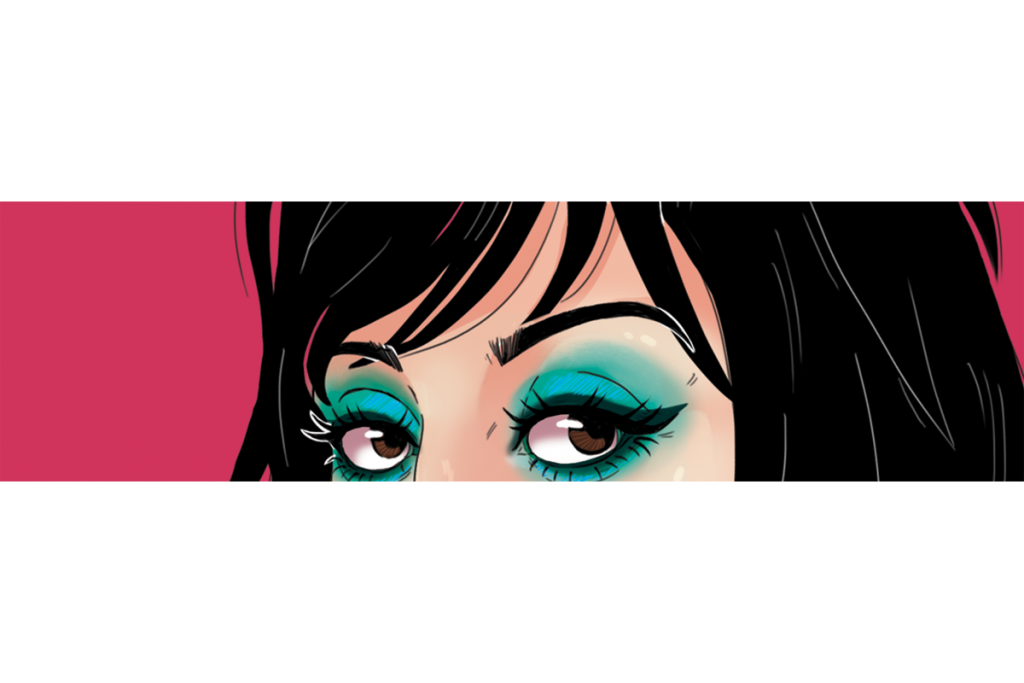
Less than five minutes into “Bad Reputation” and you’re hit with it: her voice. You can place it almost immediately — gravelly and sort of like a combination of Debbie Harry and Cher. But, it’s Joan Jett — recognizable with her black hair in a jagged mullet cut, black eyeliner, black leather jacket. You’ve seen her before, and it’s about time she got her own documentary.
“Quaaludes were really part of understanding 1970s music culture,” a reporter tells the camera crew working on “Bad Reputation” mere minutes into the documentary about the Empress of American punk rock. “Absolutely everyone was taking them.” It was an altered state of reality. Traditional families were melting away and with them, some of the gender roles a very young Joan Jett was struggling with.
Jett, now in her sixties, describes seeing the Liza Minnelli film, “Cabaret” with her mother. The flapper outfits, glamour, and music, it served as her inspiration for starting a real band. ”Bad Reputation”, of course, details the acquisition of her first guitar — a Sears Silvertone — as well as a manager and bandmates.
With names like Kari Krome, Sandy West, and Jackie Fox, The Runaways sounded like ‘70s glam-rock superheroes. Kim Fowley, a notorious and controversial man about the music business, was their manager. In an interview, legendary rock icon Iggy Pop describes Kim Fowley as, “Frankenstein if Frankenstein was on crack.”
Like any good rock-doc, Kevin Kerslake’s documentary chronicles the rise and fall of Joan Jett’s first experience with rock ‘n roll. Audiences are introduced to Cherie Currie, the Runaways lead singer who would eventually cause the band to break-up despite the instant connection she and Jett made. Jett and Currie wrote their 1976 hit song “Cherry Bomb” during Currie’s audition.
While the Runaways later became a source of inspiration for bands such as Bikini Kill, they were initially rejected by the rock music scene, at least in the United States. While American male audiences were spitting at them and throwing batteries, they were loved in Europe. Adored in Japan. It was a magazine spread commissioned by Fowley and heavily featuring a scantily clad Currie that would be their undoing. “Bad Reputation” does a great job of chronicling the events leading up to the breakup, flash-in-the-pan fame, of The Runaways.
Cherie had been the blonde bombshell, a powerhouse voice in a white corset — but Joan was the star, something the film points out Kim Fowley had quite mistakenly not seen.
The film makes a point to address the murky years between The Runaways and Joan Jett’s solo career. Before watching “Bad Reputation,” I thought of Jett’s transition from one to the other as an uninterrupted musical timeline. But, of course, that’s not the way it was.
The film follows Jett as she goes through the usual experiences of a spurned rock and roller. Drinking, parties, drugs with Sid Vicious. But eventually, Jett catches a break. The right people see that she’s serious about making an album and they help her. Kenny Laguna, her longtime producer and friend, puts his full dedication into crafting a perfect record with Joan.
Here, “Bad Reputation” takes time to teach its audience the trick of writing great rock songs. Kerslake intersperses footage of The Sex Pistols, Joan Jett and the Blackhearts, and other famed punk rock outfits with bubblegum pop music videos. He uses songs like “Sugar, Sugar” by the Archies, a banger in its own right, to prove that rock and roll and pop music use the same writing techniques to achieve different ends. They’re not really so different.
“[She’s] a weird punk rocker with an extraterrestrial good voice, and someone who’s worked in the business of making bubblegum music. She brought menace and pop sensibility,” Kenny Laguna reiterates. He then compares her to his mother driving the family car. A woman in charge. They were writing songs with lyrics like, “Do you want to touch me there?” It’s pop music but the kink wasn’t hidden behind sugar frosting and clever innuendo. It was right there, and very catchy.
The documentary credits Joan Jett and The Blackhearts with the birth of the independent music scene. Joan and her bandmates were selling albums out of their trunk and after shows before DIY promotion was even a thing. Their record was on the radio and nobody would sign them. It wouldn’t be until Neil Bogart got ahold of it, renamed it “Bad Reputation,” and put the video on MTV that Jett finally earned the respect from American audiences that she’d been getting from her overseas fans for years. “I Love Rock and Roll” was the #1 video played on MTV for sixteen weeks.
Is the documentary sentimental? A bit. But something Kevin Kerslake strives to prove to audiences is that Joan Jett is someone important. Not a gimmick. Not a relic. An artist. He wants people to finally SEE her. And when you look at Joan Jett — you see something badass. She’s all leather and black hair and eyeliner and a gravelly, powerful, knock-you-on-your-ass voice. Once audiences connect the dots there’s no denying her importance or her impact. She’s the reason for Bratmobile, L7, Seven Year Bitch, hell even Miley Cyrus shows up to pay her respects. Joan Jett is an icon, and no one can deny it.







